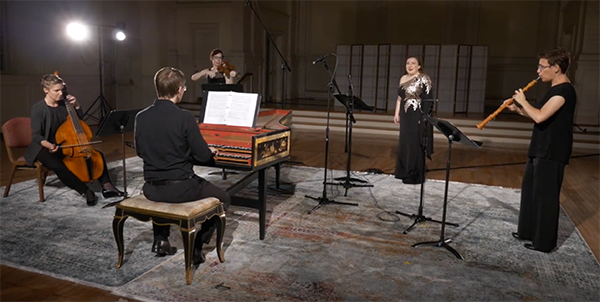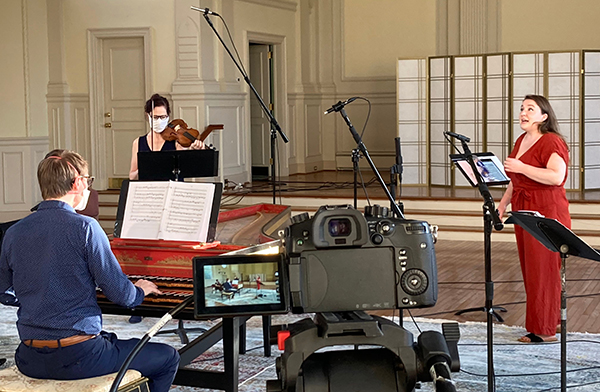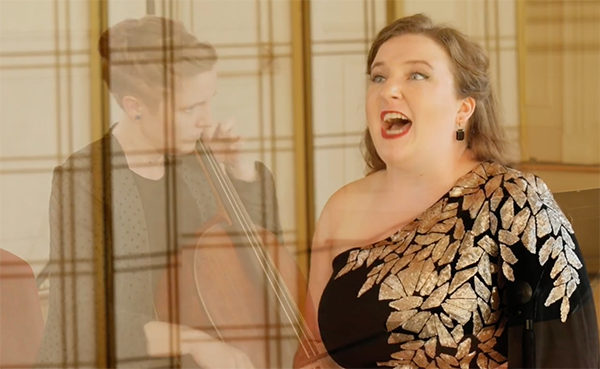by Timothy Robson

The performing environment was completely changed, with the five performers in a circular formation on two large rugs that created a playing area in the middle of an otherwise empty chapel at Plymouth Church in Shaker Heights. This gave the video producers the opportunity for creative camerawork — moving in, around, behind, and above the performers — and lighting that often reflected the light or dark aspects of the music. The recorded sound was excellent. Although the chapel is quite a resonant room, it sounded as though the audio engineers added a bit more reverberation to the acoustics, enhancing Les Délices’s already-cohesive sound.
In addition to director Debra Nagy, who played Baroque oboe and recorder, the other instrumental ensemble members were Julie Andrijeski, violin, Rebecca Reed, cello and viola da gamba, and Mark Edwards, harpsichord.

The Couperin set up the first of two French Baroque solo cantatas that formed the central pillars of the show: Louis-Nicolas Clérambault’s Medée, and Circé by the seldom-heard composer Colin de Blamont. The two sorceresses were related: legend has it that Circe was Medea’s aunt. Both inflicted horrifying penalties on their opponents. Medea killed her children to avenge her husband Jason’s infidelity, while Circe unleashed all the monsters of Hades — plus a whole lot more — on her husband Odysseus. Each follows the usual form of the solo cantata: recitative alternating with arias of contrasting moods, sometimes with shorter ariosos that bridge the gap between recitative and aria.

It may have been accidental, but the movements of the Clérambault seem to have been filmed at different times of day. Sometimes sun shone through the windows, other times it was black as night outside. If it was serendipity, the light and dark appropriately matched the cantata’s moods.
Mark Edwards’s performance of Pancrace Royer’s Le vertigo was arresting. Royer was of the same generation as Jean-Philippe Rameau. He was well-known in his day, but his music has largely slipped into obscurity. Le vertigo did indeed leave the listener dizzy in its constantly changing musical moods, its single melodic lines interrupted by the chattering of rapidly repeated chords. A feeling of capriciousness often plunged into despair. A sudden staccato chord at the end created a feeling of unease and incompleteness.

If “Bewitched” is a sign of things to come, I can recommend without reservation the remaining concerts. Les Délices’s, and especially Debra Nagy’s, imaginative thinking about the concert as a television/video experience paid off. Other performing organizations could also benefit by considering what best represents their offerings not performed live in the concert hall. Maybe some of this new thinking could even inform future live performances.
Photos by Erica Brenner & Debra Nagy.
Published on ClevelandClassical.com October 27, 2020
Click here for a printable copy of this article



